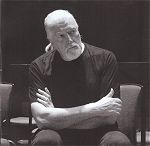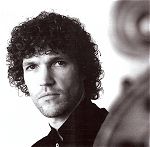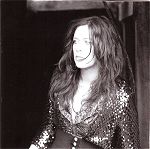This is not a MusicWeb
review but is the company Press release.
A review by Rob Barnett can be seen
here.
 JON
LORD
JON
LORD
Durham Concerto
Part 1: Morning
1. The Cathedral at Dawn
(solo violin, solo cello, Hammond organ)
2. Durham Awakes
(solo violin, solo cello, Hammond organ,
Northumbrian pipes)
Part 2: Afternoon
3. The Road from Lindisfarne
(solo violin, solo cello, Northumbrian
pipes)
4. From Prebends Bridge
(solo cello)
Part 3: Evening
5. Rags & Galas
(solo violin, solo cello, Hammond organ)
6. Durham Nocturne
(solo violin, solo cello, Hammond organ,
Northumbrian pipes)
Total time: 56.27
 |
 |
 |
|
Ruth Palmer
|
Matthew Barley
|
Kathryn Tickell
|
|
Photo:
Jochen Braun
|
Photo:
Alexandra Wolkowicz
|
Photo:
Graham Oliver
|
Matthew Barley - Cello
Jon Lord - Hammond Organ
Ruth Palmer - Violin
Kathryn Tickell - Northumbrian Pipes
Royal Liverpool Philharmonic Orchestra
/ Mischa Damev
The magnificent Norman cathedral on
the rock, part of the World Heritage
site shared by Durham University and
Durham Cathedral, was the setting for
the world premiere of Jon Lord’s
Durham Concerto commissioned by the
University to commemorate its 175th
anniversary. The 1,000 strong audience
rose spontaneously to its feet as the
final climax reflected Sir Walter Scott’s
vision, which is engraved on Prebends
Bridge: “Grey Towers of Durham/
Yet well I love thy mixed and massive
piles/ Half church of God, half castle
‘gainst the Scot”. The work
emotionally evokes the sense of history,
scholarship, place and community evident
in Durham - an unbroken line from St
Cuthbert and the Venerable Bede, Europe’s
leading scholar of the 7th and 8th centuries,
to the modern day university. Jon Lord,
known to all for Smoke On The Water
and as the driving force behind Deep
Purple, was classically trained and
has returned to his roots.
Durham Concerto cements Lord’s
position as a leading contemporary composer.
Each of the six movements in this hour-long
piece reflects a different aspect of
a day in Durham. The serene “The
Cathedral at Dawn” has undertones
of Vaughan Williams in its expansiveness,
while “Ragas and Galas” celebrates
town and gown, using Bernsteinian rhythms
and interruptions of “Gaudeamus
Igitur.” Northumbrian pipes, played
by its world’s leading exponent,
Kathryn Tickell, give a true sense of
North-East wilderness and melancholy
to “The Road From Lindisfarne,”
reflecting the pilgrimage by the Cuthbert
Community, carrying St Cuthbert’s
body and the Lindisfarne gospels, one
of the world’s great treasures,
to found Durham Cathedral in the 11th
century. The Royal Liverpool Philharmonic
Orchestra under Mischa Damev perform
the work along with an array of world
class soloists in this concerto for
violin, cello, Northumbrian pipes and
organ: Ruth Palmer (violin) who won
the Young British Performer award at
the 2007 Classical Brit Awards, Matthew
Barley (cello) who featured in BBC2
TV’s “Classical Star”
series, leading folk musician Kathryn
Tickell (Northumbrian Pipes) and of
course, Jon Lord on his original Hammond
organ, one of the very few occasions
that such an evocative instrument has
been used in an orchestral setting.
Jon Lord’s “Durham Concerto”
is a contemporary classic.
Jon Lord writes:
The general inspiration for the music
was an idea of Durham, garnered from
two or three short visits and a reading
of a short history, so a sort of ‘Durham
of the mind,’ a stylised Durham;
My Durham, if you will, imagined into
music. However the defining inspiration
for the piece was the cathedral. My
first visit to Durham in 2001 saw me
standing open mouthed on Palace Green
and then in silent awe as I walked into
that formidable magnificence inside.
Most of the themes came from the days
immediately following my first experience
of this extraordinary, imposing building.
The feeling that the very stones and
pillars themselves are imbued with centuries
of prayer, with people’s joy, grief,
despair, even anger, gratitude and hope.
As the tunes and chords and sounds started
to organise themselves in my mind and
on manuscript paper, I realised that
I was writing a sort of ‘Day in
the life of Durham’ and that the
Cathedral would be its beginning, would
be in its middle and would be at its
ending.

